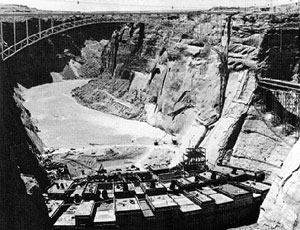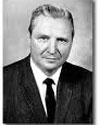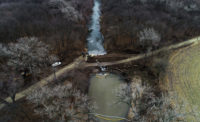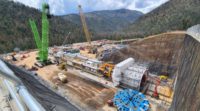There was no middle ground about Floyd Dominy, the U.S. Bureau of Reclamation’s longest-serving commissioner. He died April 20 in Boyce, Va., four months into his second century of life.


DOMINY
Dominy was either the conquering hero of the west, pushing completion of huge dam projects on the Colorado River and elsewhere that brought water and power to growth-obsessed western states and work and wealth to their construction industry builders. Or he was the reviled enemy of environmentalists, a power-grabber whose projects were simply government pork that would forever destroy the natural beauty and proper flow of western rivers. In a 1999 editorial, ENR labeled Dominy “an insufferable titan of public works.”
But in announcing Dominy’s death, at age 100, current BuRec Commissioner Michael Connor seemed to wax emotional, particularly for a civil servant talking about a peer. He placed his predecessor “at the top of the list” of “larger than life” BuRec commissioners and noted that Dominy’s death was “the end of an era.”
Dominy, who led BuRec for 10 years from 1959 to 1969 under four different presidents, pushed completion of megaprojects such as the Glen Canyon, Flaming Gorge and Navajo Dams on the Colorado River. He also pushed the Central Valley Project’s Trinity River division. He considered creation of the Lake Powell reservoir on the Arizona-Utah border his “crowning jewel,” says one published report.
Donald J. Piser, a University of Oklahoma historian and a leading authority on the history of U.S. water policy, calls Dominy someone who could out-lobby the highest-paid K street lobbyists in Washington when he wanted Congress to fund a new project. In the 1960s, Dominy told legislators that farmland watered by BuRec-funded dams was improving Americans’ health by allowing them to eat more fruits and vegetables in the winter, and that more tourists visited agency-created reservoirs than the 10 most used national parks, according to Piser.
But Dominy’s crusade and its effects on the western environment were portrayed under a much harsher light by anti-dam advocates, such as the late environmentalist Mark Reisner in his 1986 book “Cadillac Desert: The American West and its Disappearing Water” and by in-depth storytellers such as Russell Martin in his 1989 epic: “A Story That Stands Like A Dam: Glen Canyon and the Struggle for the Soul of the West.”
But time changes everything, opinions included. In a 1998 ENR Viewpoint questioning BuRec plans for the Animas-La Plata dam project in southern Colorado (ENR 6/29/98, p. 127), writer Tom Wolf, son of W.H. Wolf, an agency engineer with a major role in Glen Canyon Dam’s design, still considered the structure a “masterpiece.” But he conceded that the “technological determinism” of his father’s day “now becomes an openness to the possibility that nonstructural alternatives might exist.”





Post a comment to this article
Report Abusive Comment